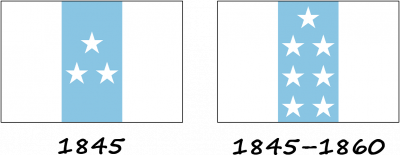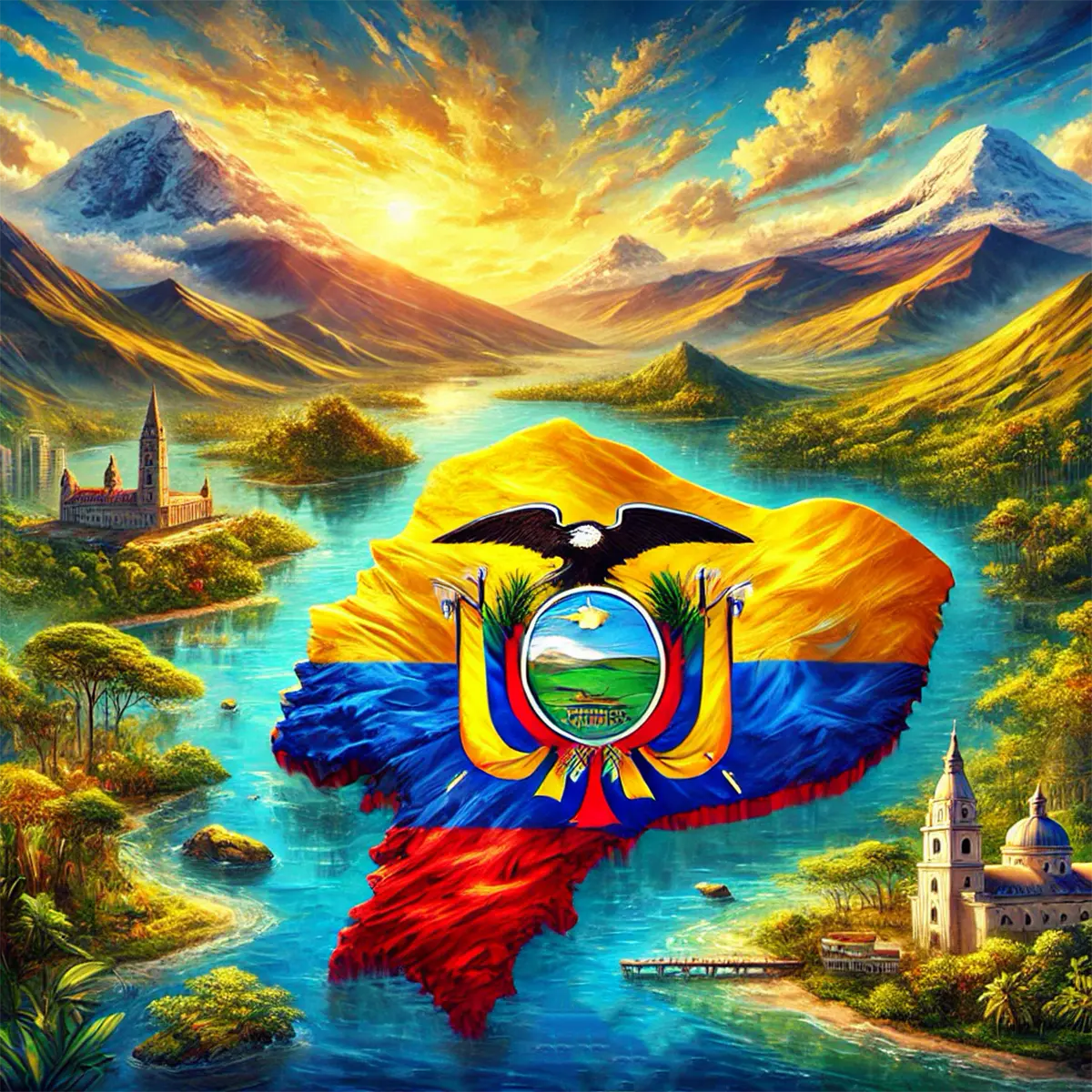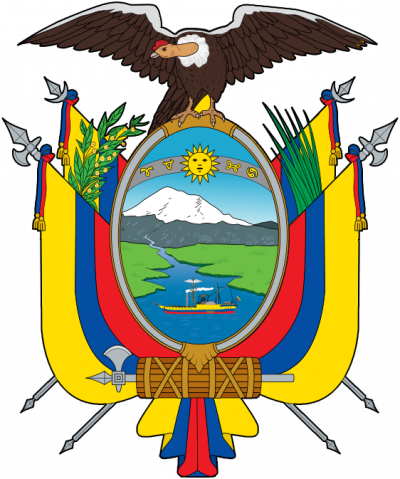The first flag of Ecuador can be considered the flag used during the first junta in Quito in 1809 - the Burgundy Cross of the Spanish colonial empire, only with opposite colors. The original cross was red on a white background, while the flag of Ecuador has a white cross on a red background. This flag was then used by the second junta in 1810, and then after an attempt to blow it up by the Quito government in 1811. The blue and white flag was approved as the emblem of the city assembly after the victory in the struggle for independence of Guayaquil in 1820. This flag had five stripes of blue and white, and on the central blue stripe were three white five-pointed stars representing the three administrative districts: Portoviejo, Machala, and Guayaquil.

In June 1822, the flag of the city of Guayaquil was changed after its accession to the Republic of Colombia. The original flag was white with a white star on a blue background in the canton, but by order of Bolivar, it was quickly replaced with the Colombian tricolor. For some historians, however, this flag still symbolizes Guayaquil's independence and points to its unique identity as a free province. Although the two stars on the flag were replaced by one, this did not mean the loss of Guayaquil's territory, but only emphasized its difference from other provinces.

At the Constitutional Congress of Colombia, it was decided to adopt the Venezuelan flag as the flag of Colombia, and later an official flag with a new coat of arms was created. This flag was used from 1822 to 1830. After the collapse of Colombia, Ecuador became one of the three states of the former Colombia and used the flag of Colombia with a modified coat of arms. However, at the Constituent Congress of 1835, the independent Republic of Ecuador was proclaimed. The flag remained in use until the constitutional convention of 1843, which led to a change in the coat of arms. The next coat of arms was created in 1843 and remained unchanged until the surrender of General Flores. However, due to the unsuccessful socio-economic course pursued by Flores, discontent spread in the country, leading to the 1845 revolution.

During this revolution, a new flag was adopted, which looked like a white, blue, and white tricolor with vertical stripes and three stars symbolizing the administrative regions of Ecuador. By a decree of November 6, 1845, the number of stars was increased from three to seven, as a symbol of the seven provinces that make up the Republic.

However, in 1860, the supreme leader Gabriel García Moreno forced the restoration of the Colombian flag, instead of the white and blue stripes with seven stars, to reflect the unity of the provinces. In 1861, this decree was ratified by the National Convention, so the tricolor became the official flag of Ecuador. On October 31, 1900, an entry was made in the official registry stating that the national flag should be tricolor, as it was at the time of the country's independence, and a coat of arms was added for official use. In November 2009, the flag was last modified and rules were issued describing the use and proportions of the national flag, coat of arms and other national symbols.








